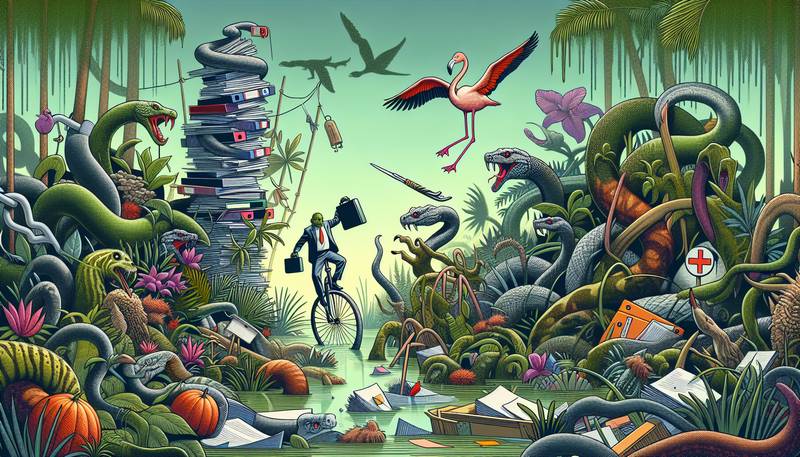Decision Trees: Cracking the Code of Team Productivity

A Wilderness of Workplace InefficiencyLet's face it: the realm of team productivity is often a bewildering jungle, fraught with potential perils, pitfalls, and perhaps even the occasional sabre-toothed tiger (or is that just the office cat?). Navigating this often-impenetrable wilderness can be near-impossible without the right tools at your disposal. Indeed, one may as well attempt to ride a unicycle through a marshland whilst balancing a flamingo on one's head.Enter the Decision Tree: A Lumberjack's Best FriendThankfully, our modern-day Indiana Jones has an ingenious weapon in his arsenal to hack through the undergrowth: the decision tree. Lest you think I'm about to advise you to wander around your office brandishing an arboreal tome, allow me to explain. A decision tree, when wielded correctly, is a powerful tool that allows teams to visualize complex processes, break them down into manageable steps, and ultimately make decisions that lead to greater efficiency and productivity (without the need for an actual chainsaw).The Anatomy of a Decision TreeAt its core, a decision tree is a flowchart-like diagram that simulates the consequences of various decisions and their potential outcomes. Picture, if you will, a tree in the midst of shedding its autumnal foliage. Now imagine that each fallen leaf represents a decision or action, and the branches from which they fell are the various pathways that can be taken.The decision tree begins with a singular trunk, from which sprout branches representing possible choices. As these branches split, they give rise to further branches, each representing the next level of decision-making and potential outcomes. With each bifurcation, the tree grows increasingly complex, providing a detailed roadmap for navigating the labyrinthine decision-making process.Implementing Decision Trees in the WorkplaceNow that we've established the basic structure of a decision tree, you may be wondering how to put one to good use in the workplace. Fear not, for I shall provide you with some practical guidance.Step 1: Identify the ProblemFirst, you must identify the issue at hand and distill it into a singular question that can be answered with a "yes" or "no." Think of this as the trunk of your tree, from which all other branches shall sprout. For example, if the problem is deciding whether or not to launch a new product, the question might be, "Should we launch this product?"Step 2: List the Possible DecisionsNext, brainstorm the decisions that could be made in response to the problem. These will form the first set of branches emerging from your trunk. In the case of our product launch example, the options might be "launch the product," "hold off for further research," or "scrap the project altogether."Step 3: Branch Out with Potential OutcomesOnce you have your initial set of branches, it's time to delve into the potential consequences of each decision. Add another set of branches, representing the possible outcomes, to your decision tree. For example, if the decision is to launch the product, outcomes might include "the product is a success," "the product is a moderate success," or "the product is a failure."Step 4: Calculate the Risk and RewardNow comes the number-crunching bit. For each outcome, assign a probability of occurrence and a value, whether it be monetary, time-based, or otherwise. Multiply the probability by the value to determine the expected result for each potential outcome.Step 5: Make Informed DecisionsFinally, use the expected results to guide your decision-making process. By analyzing the various pathways and their potential outcomes, teams can make more informed decisions that ultimately lead to improved productivity and efficiency.Benefits of Decision Trees in the WorkplaceSo why, you ask, should you bother with all this foliage-inspired decision-making? Allow me to enumerate the myriad benefits:- Improved clarity and visualization of complex decisions
- Identification of potential risks and rewards
- Increased team collaboration and communication
- Better allocation of resources and prioritization
- More efficient and strategic decision-making
In conclusion, the decision tree is a formidable ally in the never-ending quest for peak team productivity. By breaking down complex decisions into manageable steps, visualizing potential pathways, and making data-driven choices, teams can unlock a higher plane of efficiency, banishing the specter of workplace inefficiency to the murky depths from whence it came.
|
|







